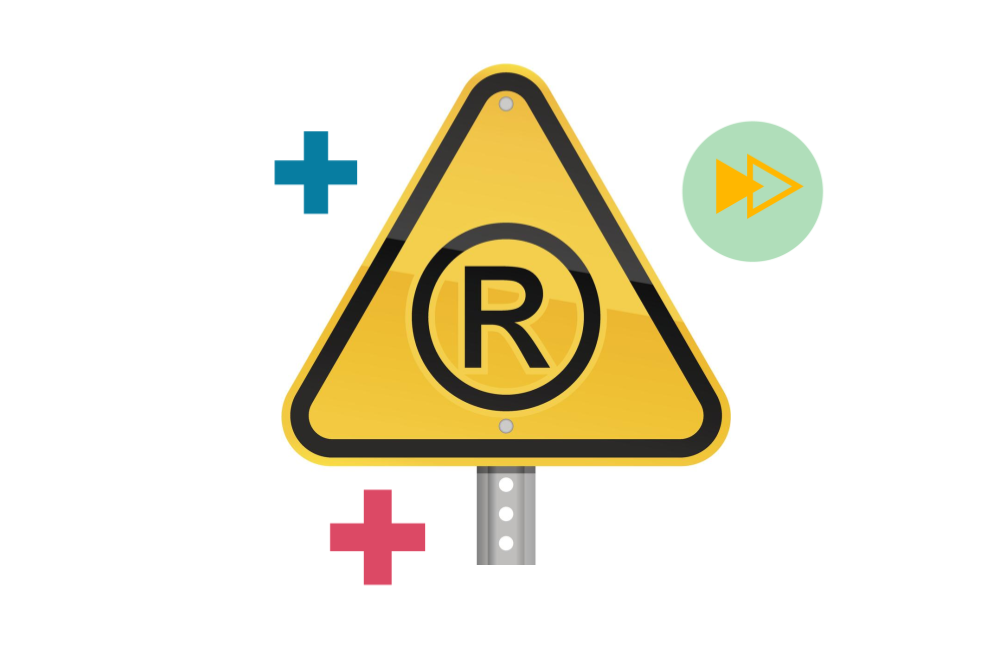
Author Matt Sammon
Intellectual Property protection is essential in creating and maintaining a successful business and, understanding how to protect your Intellectual Property should be top of your list as a business or brand owner. Pretty much every business, creates, owns and uses intellectual property (IP), whether they are aware of it or not and Intellectual Property theft can be very damaging, both in terms of lost revenue and harm to the reputation and goodwill of a business.
IP is a valuable asset that captures the essence of your business and its success and plays a key role in perpetuating that success. It can provide you with a significant commercial advantage and add value to the business. It allows you to control and benefit from the goodwill and reputation you have created to date and even add additional income streams to the business.
What do we mean when we talk about IP?
Intellectual Property is categorised into the below four key areas:
Trade Marks – trading names, product names, service names, logos, slogans, brand colours
Copyright – artistic works such as logos, advertisements, photos, musical works; literary works such as computer code, databases, training manuals, news articles, advertising copy, website content; sound recordings; typographical arrangements
Designs – The look and feel of your products, their parts and accessories
Patents – the right to prevent others from reproducing your inventions
Want to learn more about your Intellectual Property? Read our beginner’s guide to IP rights for everything you need to know. In this article, we are focused on how to protect your IP and our highly experienced Trade Mark Attorney’s are sharing their top 10 tips to keep your IP safe.
Common mistakes in IP Protection
You would not leave the office at night without locking the door because it’s full of valuable property, so why leave IP assets unprotected and vulnerable to IP theft? The main reasons IP remains unprotected are lack of time, lack of understanding or lack of good guidance.
Time – We would all like more time to run our business better, but it is often a case of having to prioritise. IP is a very valuable asset and to most businesses getting it wrong could be very damaging. Everything you do as a business gains recognition and goodwill in the name you trade under. Imagine having to change this after 18 months of trading because you didn’t check to see if anyone else owned the rights to it and/or you failed to protect it.
Understanding – IP is a complex area, but you don’t need to become an expert. What you do need to do is understand the value and the dangers. There are numerous free resources including the UK Intellectual Property Office and resources provided by IP Law firms such as Sonder & Clay.
Guidance – Your relationship with your IP advisor should be a prosperous long term relationship with both parties seeing the value, so take your time to find an advisor that understands you and your business, see our article on how to choose an IP law firm.
At Sonder IP, we want to empower all businesses to effectively protect and manage their IP. To help your brand, we’ve put together some top tips on how to address the issue of IP Protection and put in place some strategies to help you succeed:
- Identify the protectable IP at an early stage and ask yourself can I use it?
First and foremost, protecting your IP should be about ensuring security for your business going forward. The first step is ensuring that you will not infringe 3rd party rights by adopting your chosen brand name and securing protection to ensure you can invest in building a brand without fear of being forced to cease use of that brand. Therefore, a clearance search should be conducted for trade marks at the earliest practical opportunity.
In addition, you should identify work that attracts copyright protection, validate that they are original and that you own them and keep good records to demonstrate this.
If you design products, consider design protection. Design protection is often under-utilised. The design of your products can be the single biggest feature that secures sales so talk to your IP advisor about securing protection.
Any inventions that might attract patent protection need to be identified and discussed with a Patent Attorney BEFORE any public disclosure is made.
- If you collaborate make sure IP ownership is clearly set out before collaboration begins
It is of course common for business to buy in support and expertise to assist with the design and development of brands, designing marketing material, training guides etc. This is a great way to move your business forward, but you need to be clear when engaging with third parties that you want all IP to be owned by your business and ensure that any contract reflects this and enable you to demonstrate that you own any IP generated.
If you commission work from a third party you will not own the copyright or design rights unless there is an agreement to the contrary. Dealing with ownership after the event can be costly and time consuming, so be clear from the outset to avoid misunderstandings and ensure you have clear title to any IP.
- Register IP where the value is justified
Registering a trade mark is relatively inexpensive and can give you an indefinite monopoly to your chosen business, service and/or product names. It also serves as a notice to third parties to prevent them from adopting a confusingly similar name.
A trade mark registration is tangible evidence of your rights and enforcing a registered trade mark is far easier than enforcing goodwill in a business, so registration can save significant costs and greatly increase the chances of success in the event you find your business being impacted by use of a confusingly similar name. See what you can register as a trade mark here.
Registered designs are an under-utilised form of protection. If you have designed a product that is appealing to consumers you can protect that design to ensure that you have the exclusive right to manufacture and sell products made to that design, ensuring that only you benefit from the creativity and hard work that went into the design.
Patent protection can be hugely beneficial, but usually involves a significant investment. A decision on whether or not to secure registered IP is a business decision and there should be a cost/benefit analysis before committing funds to securing protection.
- Register in key markets and the markets with the biggest growth potential
Trade Mark, Design and Patent registrations are strictly territorial. A registration in the UK will only give you protection in the UK. Therefore, it is important to consider your key markets and the markets where you anticipate future growth and consider securing protection.
You can use priority periods to spread the cost of expanding your IP portfolio without the risk of losing rights. The more countries in which you seek IP protection, the greater the cost. You should discuss options for overseas protection with your IP advisor and insist on a detailed budget proposal to ensure you know what you are getting into. You can then decide on a filing strategy to secure protection based on a detailed cost/benefit analysis.
- Establish an IP protection policy and framework
Most businesses will continue to generate IP as they evolve, grow and diversify. Setting out a process for identifying IP, reporting creation to the relevant decision makers, clearing for use, taking a decision on what protection is appropriate and allotting budget for protection is good practice and ensures that you continue to protect key assets.
It is also important that any such policy includes engagement with third parties to ensure that where possible you retain ownership of IP important to the running and success of your business.
- Educate key staff on IP protection
Many IP infringements arise due to a simple lack of understanding of what IP is and how and where you may risk infringing third party rights. An IP Policy and Framework will only be effective if your staff are aware of it, understand it and appreciate why it is there. This ensures that your staff know when and where they need to take advice before exposing the business to risk.
- Monitor – make your IP work for you
Protecting your IP can ensure that many of the unique facets that contribute to your success are protected. However, in order to ensure that protection is effective you need to consider monitoring the activities of competitors to ensure that your brands remain distinctive and your designs are not copied.
There are a variety of tools available for monitoring Trade Mark Registries and competitor activity and your IP advisors can provide you with more detail on this.
- Keep control
Your IP identifies you, your business and your reputation, so controlling how and when it is used is important. Consistency is key so adopt brand guidelines and make it clear to staff and third parties authorised to use your branding what is expected of them and make sure they adhere to your requirements.
If you licence the brand, then include quality control provisions to ensure your high standards are met and use by licensees does not cause any harm to your reputation and the value of your brand.
- Maximize the value of your IP
Registered IP rights are an asset that can be mortgaged, licensed, bought and sold. Take the time to consider how you can maximise the value of your IP. It may be that it can be used to secure funding to invest in the business, be licensed to third parties to diversify your income stream or sold to realise a return on your investment.
You can also discuss with your accountant ways in which you can account for your IP in the company’s balance sheet or use your IP to benefit from favourable tax treatment. Maximising the value of your IP is fuelled by an innovative IP strategy, ensure that you collaborate with an experienced IP firm, such as Sonder IP, who are recognised for this style of IP service.
- Don’t stand still, review and repeat
Plans change and often the business heads in a different direction. It is important that the IP strategy follows. The IP strategy serves many purposes including ensuring that the direction of travel for a business is safe and risks are identified and mitigated. It also ensures that your hard-won market position and competitive advantage are protected.
If you want your IP to keep working for you and generating value then you need to ensure that it stays relevant and serves its purpose. We recommend that you conduct an audit of your IP, at least once a year to identify where you need to adapt to continue making the most of your IP.
We create real IP value
From the everyday to the IP emergency, our accomplished Chartered Trade Mark Attorneys and IP Solicitors are driven to get the very best outcome for every brief for every client, every time! Sonder & Clay are a full service IP law firm with proven expertise and results in IP protection, strategy, disputes, and exploitation. Learn more about our IP services or get in touch with us for a complimentary IP audit today.



